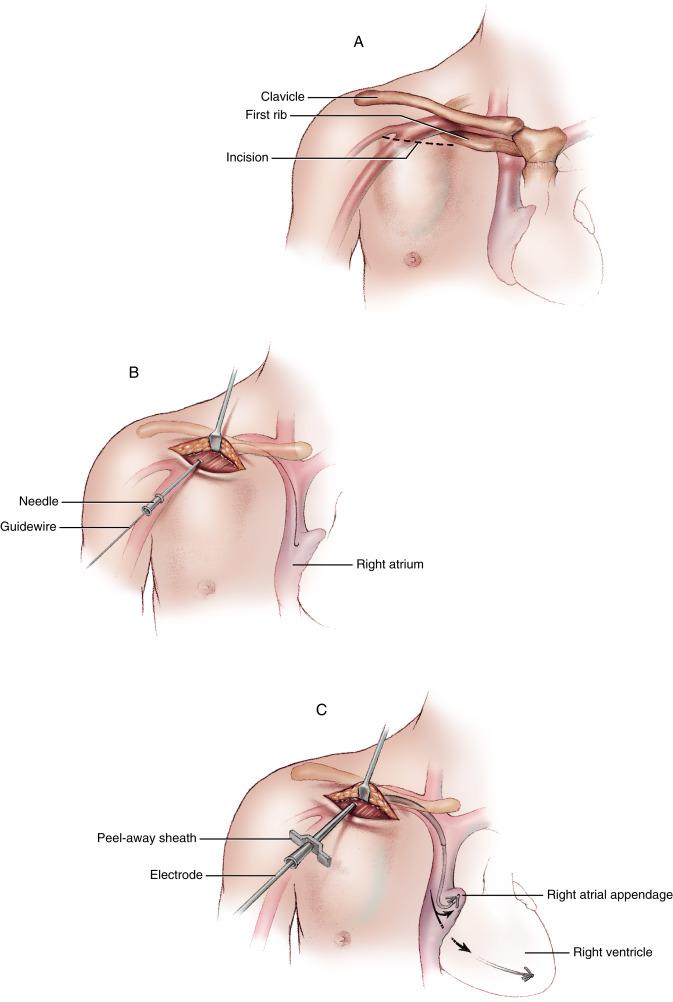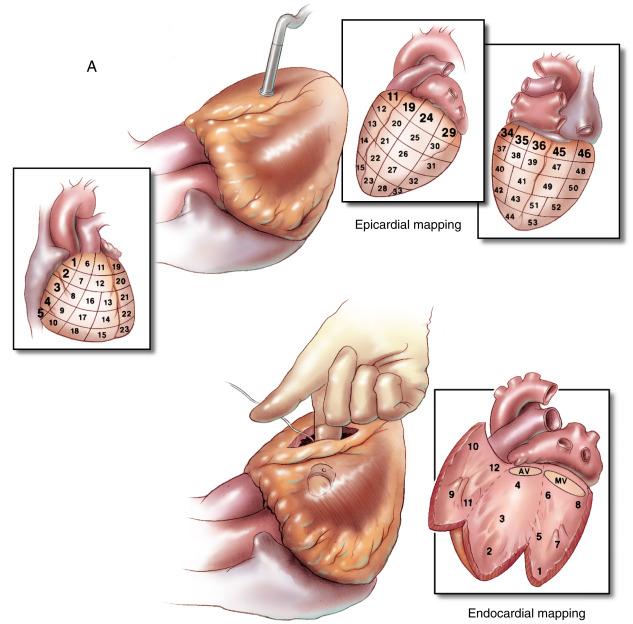Physical Address
304 North Cardinal St.
Dorchester Center, MA 02124
Permanent pacing systems require the implantation of pacing electrodes in contact with the myocardium and the placement of a pulse generator in the body. There are a number of options for accomplishing these tasks. In certain circumstances it may be advisable to implant permanent myocardial electrodes on the surface of the heart at the time of open cardiac surgery. Endocardial contact with the electrode, however, appears to be more satisfactory in achieving long-term, low-threshold function of the electrode. The availability of small-diameter, flexible electrode catheters and small pulse generators makes electrode implantation via the subclavian vein and placement of the pulse generator in the chest wall possible and preferable in nearly every case in both adults and children.

Insertion of an automatic internal cardioverter defibrillator (AICD) is also accomplished by electrode implantation using a transvenous technique and subcutaneous implantation of the AICD generator.

Catheter techniques for the localization and characterization of cardiac arrhythmia precede operation. Most rhythm disturbances can be controlled with properly selected medications. A large number of drugs are available, and new ones are continuously being developed. Should the arrhythmia prove refractory to medical therapy, radiofrequency ablation by intravascular catheter techniques may be indicated. In some cases operation may be indicated when less invasive techniques have failed or in conjunction with other intracardiac operations such as coronary artery bypass, resection of ventricular aneurysm, or cardiac valve reconstruction or replacement.

Become a Clinical Tree membership for Full access and enjoy Unlimited articles
If you are a member. Log in here